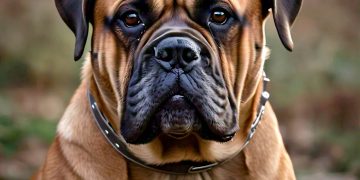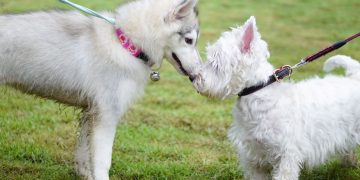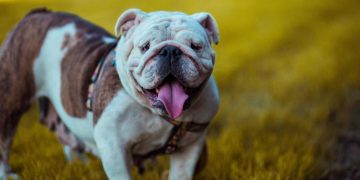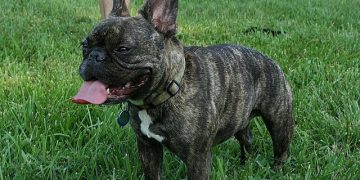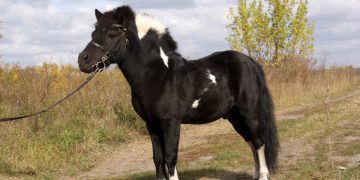The holiday season is a time of celebration, family gatherings, and, of course, the festive joy that comes with decorating a Christmas tree. However, for dog owners, the presence of a Christmas tree can present various safety challenges. Dogs, especially curious ones, may be drawn to the tree, decorations, and even the water bowl beneath it. To help keep your dog safe, we’ve compiled a comprehensive guide filled with tips on how to dog-proof your Christmas tree and ensure your furry friend enjoys a worry-free holiday season.
Why Christmas Trees Pose Risks to Dogs
While a Christmas tree may seem like just a festive addition to your home, it can be filled with hazards that pose a threat to your dog’s health and well-being. Dogs are naturally curious and often like to explore their surroundings, including any new additions like a Christmas tree. Here are some of the key dangers associated with Christmas trees:
- Decorations: Shiny baubles, tinsel, and garlands can be enticing for dogs, especially those who like to chew on things.
- Electrical lights: Cords and electrical connections are tempting for dogs to chew on, which can cause electrical shock or fire hazards.
- Tree water: If you have a live tree, the water in the tree stand may contain preservatives or bacteria that can make your dog sick.
- Toxic plants: Some trees, such as pine, can cause mild gastrointestinal upset if ingested. Other holiday plants like poinsettias, holly, and mistletoe are toxic to dogs.
By taking a few simple precautions, you can minimize these risks and make your home safe for your four-legged family members.
Essential Tips for Keeping Your Dog Safe Around a Christmas Tree
1. Secure the Tree Properly
A Christmas tree is heavy and top-heavy, which can make it easy for an excited or curious dog to knock it over. Here’s how you can keep your tree secure:
- Anchor the tree: Use a tree stand that’s sturdy and designed to support the size of your tree. Consider anchoring the tree to the wall or ceiling using fishing line or a special tree tie.
- Keep it away from high-traffic areas: If possible, place the tree in a corner or a less accessible part of the room to limit your dog’s access to it.
- Stabilize the tree: Ensure that the base is wide and stable. A smaller, tabletop tree may be a better option if you have a particularly energetic dog.
2. Prevent Tree Water Access
Live trees require water to stay fresh, but this water can be harmful to your dog if ingested. Here’s how to keep your dog from drinking it:
- Cover the tree stand: Use a tree skirt to cover the base of the tree and the water bowl. Ensure it’s tight enough that your dog cannot access it.
- Consider a tree water additive: Some pet owners opt to use pet-safe tree water additives to prevent bacteria growth, but the best solution is to keep the water completely out of reach.
- Change the water regularly: Even if your dog can’t reach the tree stand, make sure to change the water daily to prevent mold and bacteria growth.
3. Keep Decorations Out of Reach
Dogs love to investigate new objects, especially if they’re shiny or colorful. To avoid accidents:
- Use unbreakable ornaments: Opt for shatterproof or soft ornaments that won’t break into sharp pieces if your dog knocks them off.
- Hang ornaments higher: Place ornaments higher on the tree, ideally out of your dog’s reach. If your dog is a jumper, avoid putting decorations too close to the bottom.
- Avoid tinsel and ribbons: Tinsel, garland, and ribbons may seem festive, but they’re a major choking hazard for dogs. If ingested, these items can lead to intestinal blockages. Use safer alternatives like fabric garlands or wooden ornaments.
4. Be Cautious with Tree Lights and Cords
The twinkling lights on your Christmas tree can be mesmerizing for both humans and pets, but they can pose significant hazards:
- Hide cords: Ensure that cords are hidden or placed high enough to keep your dog from chewing on them. Use cord protectors or encase them in tubing designed for pet safety.
- Use pet-friendly lights: Consider using battery-operated lights or low-voltage LED lights, which are safer in case of accidental chewing.
- Turn off lights when unattended: Always turn off the lights when leaving your dog alone in the room. Electrical cords can be dangerous if chewed on, leading to burns or electrical shock.
5. Avoid Toxic Holiday Plants
Several popular holiday plants can be toxic to dogs. These include:
- Poinsettias: While not highly toxic, poinsettias can cause mild gastrointestinal upset if ingested.
- Holly: Holly berries and leaves can cause nausea, vomiting, and diarrhea if eaten.
- Mistletoe: Mistletoe contains compounds that can cause severe symptoms like vomiting, difficulty breathing, and seizures if ingested.
- Christmas cactus: These are non-toxic, but some dogs may still get an upset stomach from chewing on them.
- Keep plants out of reach: Avoid placing these toxic plants where your dog can easily access them, such as on low tables or under the tree.
6. Provide Dog-Safe Alternatives
To keep your dog entertained and away from the tree, offer them safe alternatives:
- Interactive toys: Provide your dog with new toys during the holidays to keep them busy and distracted from the tree.
- Chew toys: Giving your dog appropriate chew toys can help satisfy their instinct to chew without posing a risk to your decorations.
- Holiday treats: Consider giving your dog a special treat or a holiday-themed chew to keep them occupied and feeling included in the festivities.
7. Use Deterrents
If your dog insists on exploring the tree, consider using safe deterrents:
- Citrus scents: Most dogs dislike the smell of citrus. You can create a homemade spray with water and lemon or orange peel to spritz around the base of the tree.
- Pet-safe sprays: There are commercially available sprays that deter dogs from chewing or getting too close to certain areas. Ensure any spray you use is non-toxic and safe for pets.
8. Supervise Your Dog
Finally, always supervise your dog when they’re near the Christmas tree, especially during the first few days of decoration. Keeping an eye on them ensures that any risky behavior can be quickly corrected, preventing accidents before they happen.
Conclusion
With a little preparation and vigilance, you can enjoy the holiday season with a beautiful Christmas tree while keeping your dog safe. By following these tips—securing the tree, protecting decorations, keeping harmful plants and water out of reach, and providing your dog with alternatives—you can create a festive environment that both you and your dog can enjoy. Always keep your vet’s contact information handy in case of an emergency, and don’t hesitate to seek professional help if your dog ingests something harmful.
A little care and attention will ensure that your Christmas tree remains a source of joy and beauty without becoming a safety hazard for your beloved pet.


